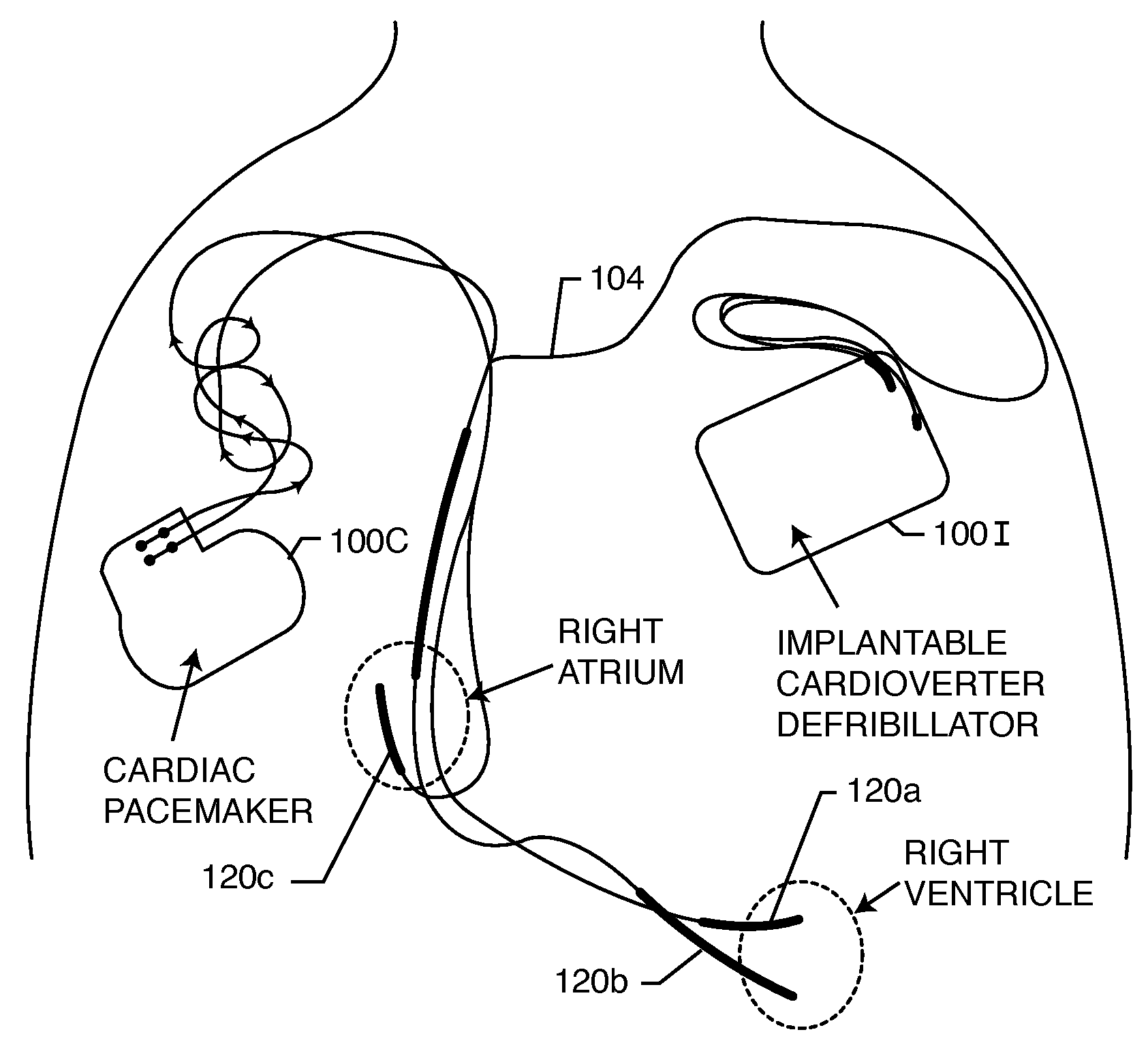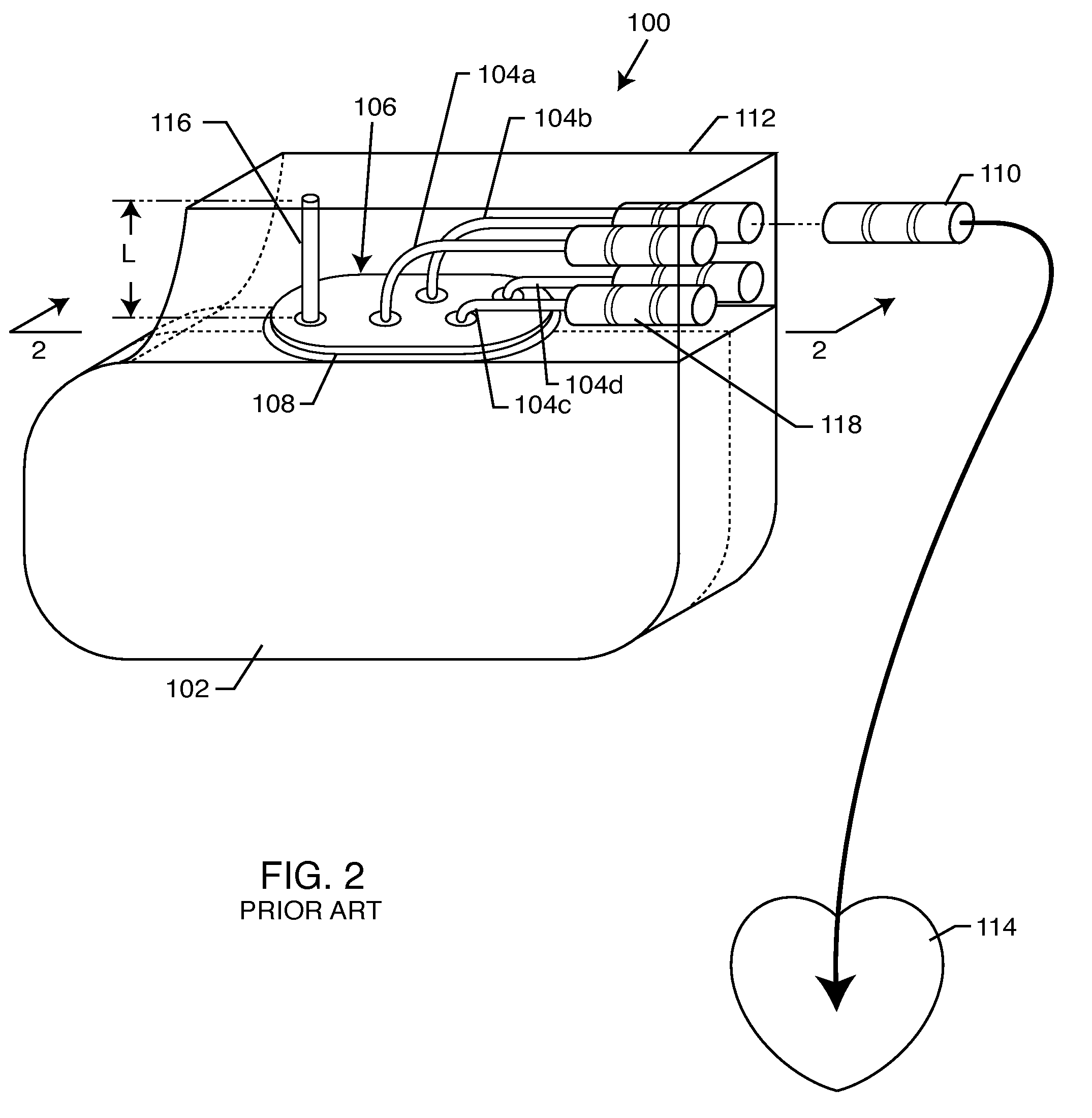[0015](2)
Reed switch damage. Direct damage to the
reed switch is theoretically possible, but has not been reported in any of the known literature. In an article written by Roger Christoph Lüchinger of Zurich, he reports on testing in which reed switches were exposed to the static
magnetic field of MRI equipment. After extended
exposure to these static magnetic fields, the reed switches functioned normally at close to the same
field strength as before the test. However, it is still important for the physician to check the proper operation of the
reed switch and the AIMD after MRI scans are complete.
[0016](3) Pacemaker displacement. Some parts of pacemakers, such as the batteries and reed switches, contain
ferrous magnetic materials and are thus subject to mechanical forces during MRI (testing is done to ASTM Standards). Pacemaker displacement may occur in response to magnetic force or magnetic torque (newer pacemakers and ICDs have less
ferrous materials and are less susceptible to this). With the much smaller sizes of modern AIMDS, most experts now report that force and torques due to MRI are now negligible.
[0017](4)
Radio frequency field. At the pulsed RF frequencies of interest in MRI, RF energy can be absorbed and converted to heat. The power deposited by RF pulses during MRI is complex and is dependent upon the power, duration and shape of the RF pulse, the relative long term time averages of the pulses, the transmitted frequency, the number of RF pulses applied per unit time, and the type of configuration of the RF
transmitter coil used.
Specific absorption rate (SAR) is a measure of how much energy is induced into body tissues. The amount of heating also depends upon the volume of the various tissue (i.e.
muscle, fat, etc.) imaged, the electrical resistivity of tissue and the configuration of the anatomical region imaged. There are also a number of other variables that depend on the placement in the
human body of the AIMD and its associated lead wire(s). For example, it will make a difference how much current is induced into a pacemaker lead wire
system as to whether it is a left or right pectoral
implant. In addition, the routing of the lead and the lead length are also very critical as to the amount of induced current and heating that would occur. Also, distal TIP design is very important as the distal TIP itself can act as its own antenna. Location within the MRI bore is also important since the electric fields required to generate the RF increase exponentially as the patient is moved away from MRI bore center-line (ISO center). The cause of heating in an MRI environment is two fold: (a)
RF field coupling to the lead can occur which induces significant local heating; and (b) currents induced during the
RF transmission can flow into
body tissue and cause local
Ohm's Law heating next to the distal TIP electrode of the implanted lead. The
RF field in an MRI
scanner can produce enough energy to induce lead wire currents sufficient to destroy some of the adjacent
myocardial tissue.
Tissue ablation has also been observed. The effects of this heating are not readily detectable during the MRI. Indications that heating has occurred would include an increase in pacing threshold, venous
ablation,
Larynx ablation, myocardial perforation and lead penetration, or even arrhythmias caused by
scar tissue. Such long term heating effects of MRI have not been well studied yet. Placing an electronic switch in accordance with the present invention at or near the distal electrode stops the flow of MRI RF currents and therefore minimizes or altogether eliminates the above concerns.
[0018](5) Alterations of pacing rate due to the applied
radio frequency field. It has been observed that the
RF field may induce undesirable fast
cardiac pacing (QRS complex) rates. There are various mechanisms which have been proposed to explain rapid pacing: direct tissue stimulation, interference with pacemaker
electronics or pacemaker
reprogramming (or reset). In all of these cases, placing an electronic switch in accordance with the present invention at or near the distal electrode and at or near the AIMD stops the flow of MRI RF currents and therefore eliminates all of the above concerns. Placing electronic switches in accordance with present invention in series with the leads at the points of lead wire ingress and egress into the AIMD housing (at the device
feedthrough EMI filter) prevents MRI RF fields from entering the AIMD housing and therefore provides a very high degree of protection to AIMD
electronics. When used in combination with the AIMD EMI filters, this will make alterations in pacemaker pacing rate and / or pacemaker
reprogramming much more unlikely.
[0019](6) Time-varying
magnetic gradient fields. The contribution of the time-varying gradient to the
total strength of the MRI
magnetic field is negligible; however, pacemaker systems could be affected because these fields are rapidly applied and removed. The
time rate of change of the
magnetic field is directly related to how much electromagnetic force (EMF) and hence current can be induced into a lead wire
system. Lüchinger reports that even using today's gradient systems with a time-varying field up to 60 Tesla per second, the induced currents are likely to stay below the biological thresholds for cardiac
fibrillation. A theoretical upper limit for the
induced voltage by the time-varying
magnetic gradient field is 20 volts. Such a
voltage during more than 0.1 milliseconds could be enough energy to directly pace the heart. The placement of an electronic switch in accordance with the present invention at or near the distal electrode eliminates such concerns.
 Login to View More
Login to View More  Login to View More
Login to View More 


